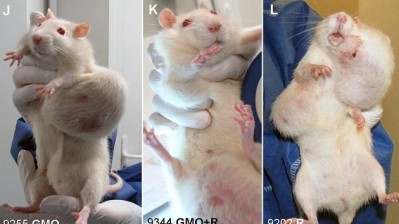Soapbox
How could Séralini's GM study have made suckers of so many people?

The move was a major blow to opponents and a huge step in undoing the unquantifiable damage the study has done to consumer confidence in GM technology. Forbes magazine had described the study as the “central pillar of the anti-crop biotech movement”.
The initial study, led by Frenchman Dr Gilles-Eric Séralini, from the University of Caen, and entitled Long Term toxicity of a Roundup herbicide and a Roundup-tolerant genetically modified maize, was published by Food and Chemical Toxicology, an Amsterdam-based global journal, in September last year. But the media furore started even before that when (sneakily or strategically, depending on your view) embargoed copies of the research were selectively released as part of a highly choreographed public relations campaign.
At that time, the study was given only to selected journalists on the condition they sign non-disclosure agreements, which meant they basically could not consult other scientists to seek additional views on the findings, thus ensuring the paper’s conclusions got the lion’s share of coverage.
(That’s the eternal conundrum for food companies—wild claims on the front page, denials or rebuttals buried on page 20 if you’re lucky!).
Referring to the media release as highly choreographed is perhaps an understatement, and it’s worth focusing on this for a moment. Compared to any New Zealand release of research, the Séralini paper appeared to have a full Hollywood-style roll-out.
Since the launch I’ve yet to hear of any other scientific paper releases that coincide with a press conference, reports of books and films, and shock/horror YouTube slasher-style videos complete with scary music at the ready.
It would be scary stuff if it weren’t based on such questionable science. Seriously—go watch it here. Those producing all the collateral and pushing the story (whoever they were) clearly knew they had an anti-GM bomb to detonate and they were aiming for maximum effect.
It worked. The ensuing worldwide anti-GM sensationalist headlines, regularly accompanied by grotesque pictures or rats and pictures of the grim reaper protesters or mutated corn, were predictable. Such inflammatory stories were carefully seeded well before official publication in the journal and left many of the world’s science bodies and regulators scrambling to comment.
For example, Britain’s Daily Mail reported that the GM feed caused cancerous tumours potentially in humans, and not forgetting potential organ failure!
The study triggered all sorts of calls for regulatory action, reviews, and government responses around the world. Some countries actually implemented bans as a result. The anti-GM lobby was ecstatic. Finally they had something which looked like a serious health risk to scare consumers with. They put aside the obvious limitations of comparing rats with humans and used the study as a central pillar in their campaign to scaremonger and lobby governments.
In New Zealand, groups such as GE-Free NZ excitedly called for government action because the study proved there were: “serious implications... evidence of significant risk for consumers especially children and people with reduced immunity... The board of FSANZ [Food Standards Australia New Zealand] should resign” they said at the time.
Latterly they used the study as evidence to lobby Ministers of Food Safety Kate Wilkinson and Nikki Kaye while wasting thousands of dollars of taxpayers’ money on a failed Regulatory Review Select Committee complaint.
I’ve no doubt the study was a key piece of so-called evidence to lobby for unnecessary clause changes in the Food Bill currently before a New Zealand Select Committee.
Australia’s Safe Food Foundation called for immediate action from federal and state governments “to ensure that the public is protected against further exposure, there is an urgent need for a fundamental overhaul of the regulatory framework”.
This group, like numerous others, used the research to beat FSANZ around the head and cast unwarranted doubt on the entire trans-Tasman food regulatory system.
But right from day one, those giving the research even a cursory look, let alone a detailed critique, smelled a rat, and that wasn’t because it was the study’s selected rat breed or poor research design.
Highly respected scientists and organisations embarked on a detailed analysis and began putting their detailed concerns into writing in a series of letters to the editor, particularly to Food and Chemical Toxicology. It’s worth reading some of their responses, which can be found here at ScienceDirect.com
The European Food Safety Authority took the rare step of issuing a press statement to rebut a single paper. The statement was headlined Séralini et al. study conclusions not supported by data, says EU risk assessment community, and noted that “serious defects in the design and methodology of a paper by Séralini et al. mean it does not meet acceptable scientific standards and there is no need to re-examine previous safety evaluations of genetically modified maize NK603”. It could not have been a more public rebuke.
In the meantime, the Séralini Paper kept being quoted in further media coverage and cited in more academic papers and activist attacks on GM, so it was timely that Food and Chemical Toxicology retracted the work—12 months after publication, but better late than never.
A couple of issues continue to trouble me about the paper, however, and mainly on the topics of conflicts of interest, animal welfare and the peer review process.
Though it said “the authors declare there are no conflicts of interest”, it must be noted that Prof. Séralini was president of the scientific board of the Committee for Research & Independent Information on Genetic Engineering—an organisation vigorously opposed to GM. To be kind, I’d say that committee would appear to a reasonable person to be about as independent on GM issues as Greenpeace is on climate change.
What was the genuine possibility of this work concluding that Roundup-treated corn was okay or resulted in healthier rats? Anyone who seriously ever believed that this research was going to objectively and fairly test the effects of Monsanto-treated corn, and that the study was going to conclude anything other than GM was bad, is either naive or an idiot.
Then there is the disturbing issue of the treatment of the rats themselves. Now, I don’t know about how science ethics are managed in France, but I do know that if a New Zealand scientist had allowed lab animals to deteriorate to such a degree as they did in this trial, then they’d be burnt severely in the court of public opinion.
And let’s also introduce some honesty into the discussion about the rat pictures which were released by researchers to the media like some form of anti-GM disaster-porn. There was no scientific reason for letting the tumours, lesions, and ulcerations develop to the size they did—except to create an horrific visual shock factor for public relations purposes.
Certainly the visual strategy worked, because people who saw the rats—bulbous, contorted and almost certainly in pain—were horrified, but none more so than those whose day job it was to advise on science ethics.
The pictures are awful, and the intended message is that GM causes terrible cancers, without pointing out that the particular rat breed, according to some of the experts, is “prone to develop cancer with age and especially when there is no dietary restriction”.
Where was the outcry from animal welfare groups? What was surprising was how all the activist animal welfare groups were as quiet as mice.
And if you don’t think that’s even worth noting, ask yourself would there have been a different reaction had it been research conducted by L’Oreal, Procter & Gamble or Unilever. You betcha! All hell would have broken loose. The outrage would have been global. There would have been calls for the scientists to be sacked, for publications to be withdrawn on animal welfare grounds alone, and for laws to be changed immediately.
But such cruelty from a darling of the anti-GM movement and not one whisper from the usual groups about animal welfare: that’s very telling.
See, that’s the hypocrisy of some activists. I suspect some were so overjoyed at the Séralini Paper result and its opportunity for campaigning purposes that all other issues were parked.
Such a callous disregard for animal welfare should have been grounds alone for not publishing the study, and that’s before condemnations hailed down post-publication about poor research design, insufficient numbers of rats, the choice of rat breed, and potential oversights with interpretation.
Finally, let’s touch on the topic of the peer-review process that allowed this paper to be published. Peer review is an important practice for academia, but it works only if the peers have appropriate knowledge. I don’t know who the fellow science travellers were who gave this study the big tick, but I hope they are having second thoughts and feel a tad sheepish.
Certainly this incident is giving Food and Chemical Toxicology an opportunity to improve its peer-review process and no doubt other journals are doing the same.
A rational discussion about the beneficial use of genetic modification in the food industry (on any food technology topic for that matter) is always difficult when faced with a toxic collision between activism and junk science.
Thank goodness New Zealand and Australia’s regulatory bodies, FSANZ and the Ministry for Primary Industries, had the expertise and cool heads to maintain an evidence-based approach in response to the friction this paper caused.
Food and Chemical Toxicology’s announcement of its retraction of the paper can be found here at the publisher’s website.
![“Some journalists are just lazy, but [some scientists] play on their ignorance. Sometimes [they are] guilty of sexing things up.” Image: iStock](/var/wrbm_gb_food_pharma/storage/images/_aliases/wrbm_medium/5/3/0/2/2382035-1-eng-GB/Research-spin-has-policymakers-going-round-in-circles.jpg)

















